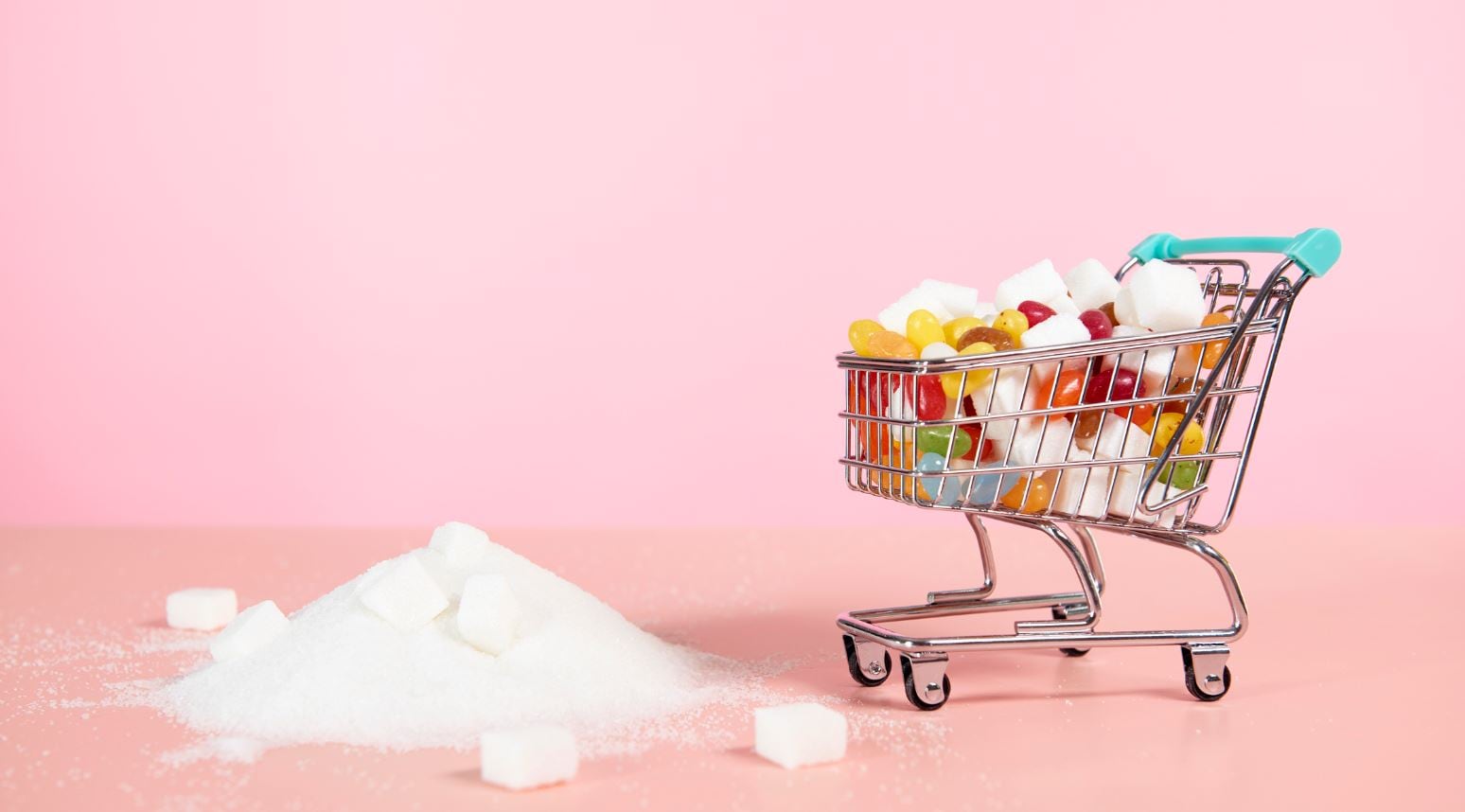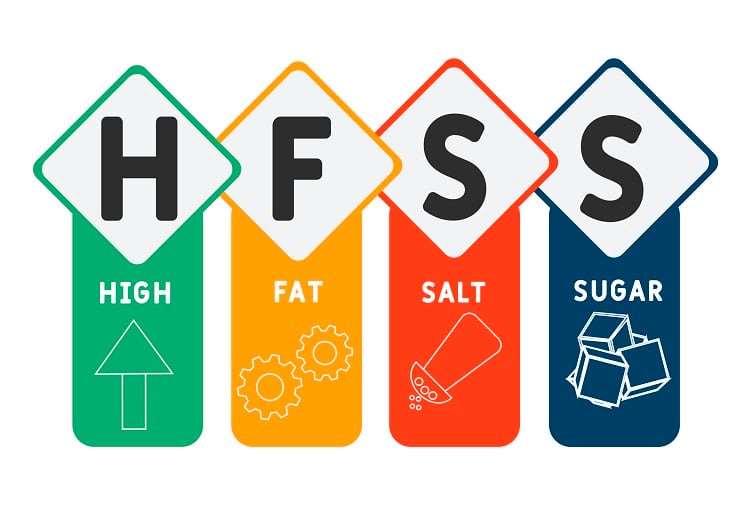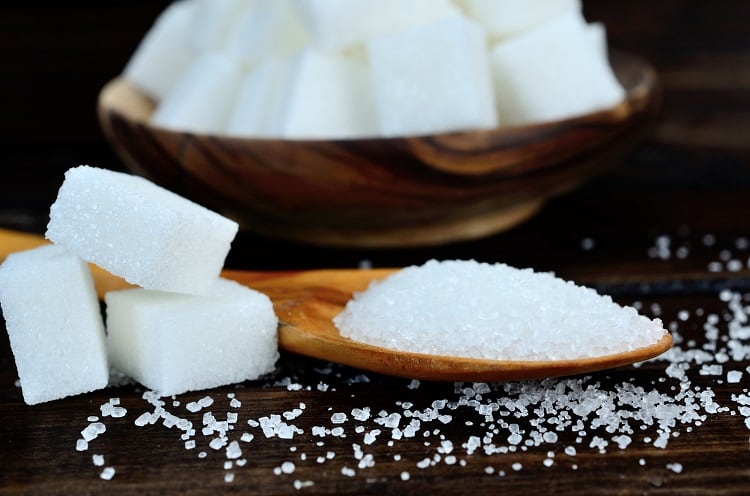There are 21 sweeteners or sugar substitutes authorised for use in the European Union by the EFSA and 20 authorised for use in the UK by the FSA.
Due to the nature of the sector, research into sweetener use is ongoing, meaning they are all frequently evaluated.
Some major safety milestones in sweeteners’ use include a 2016 study on the carcinogenic potential of sucralose (E955) in mice; the publication of the EFSA’s protocol for assessing exposure to sweeteners in 2020; and a revised protocol for hazard identification and hazard characterisation of sweeteners in 2023.
Sweeteners are made in many ways, including extraction from plants (steviol), synthesis (saccharin) or with microorganism use such as with the production of erythritol.
Monosaccharides and disaccharides, as well as other common, sweet substances, are not deemed sweeteners under EU regulation. However, some sugar replacement substances not widely consumed before May 1997 are assessed separately as novel foods.
If used in a food or drink product, a sweetener’s presence must be indicated on a label by name, its E number or both.
So, what sweeteners are being used by food and drink manufacturers and what do the do?
Sorbitols (E420)
Sorbitol and sorbitol syrup is a non-cariogenic carbohydrate at two-thirds the calories of sugar, but also 40% less sweet than sugar. It has a cooling taste, is metabolised slowly and has a low glycaemic index. It is most used in sugar-free chewing gum.
Sorbitol is currently under re-evaluation by the EFSA.
Mannitol (E421)
Also known as sugar alcohols, Mannitol is at 60% the sweetness of sugar and lower in calories at 2.4kcal/g versus sucrose’s four calories per gram.
It is used in various sugar-free confectionery, is non-cariogenic and is used to coat hard sweets and candies like chewing gum and chewable medication .
Mannitol is currently under re-evaluation by the EFSA.
Acesulfame K (E950)
A calorie-free sugar substitute, acesulfame potassium is sometimes marketed under the names of Sunett and Sweet One outside of the EU.
It is an intense sweetener – 200 times the sweetness of sugar – and was developed in Germany in 1967. Its use in food and drink is broad and diverse, from baked goods to sweets and beverages.
Acesulfame K is currently under re-evaluation by the EFSA.
Aspartame (E951)
One of the most discussed sweeteners, Aspartame is 200 times sweeter than sugar and used widely across food and drink manufacture.
It is a low-calorie, white and odourless powdered sweetener that can also be found in many consumer kitchens as a tabletop sweetener.
Aspartame’s re-evaluation was completed in 2013
Cyclamates (E952)
At 30-50% sweeter than sugar, Cyclamate, also cyclamic acid or as its Na and Ca salts, is the mildest commercial artificial sweetener.
In the EU and UK it is used in soft drinks, cakes, ice cream, canned fruits and similar products, but has been banned from use in the US.
As a result, Coca-Cola uses a different sweetener for products like Coca-Cola Zero in the US market. The US’s Food and Drug Administration had suspected cyclamate is toxic and possibly a carcinogen.
However, EU acceptable daily intake is seven milligrams of cyclamate per day of bodyweight for children up to eight.
Cyclamate’s re-evaluation is ongoing.
Isomalt (E953)
Used for its sugar-like properties, meaning it can be processed to have a grainy texture like standard sugar, Isomalt has little to no impact on blood sugar levels.
It is a type of sugar alcohol that has the same sweetness of sugar and is used in mostly baking processes.
Isomalt is currently under re-evaluation by the EFSA
Saccharine (E954)
Also known as saccharine, benzosulfimide or used in saccharine sodium or saccharin calcium forms, saccharin, which has Na, K and Ca salts variants, has been used in food and drink for over 100 years.
It is 300-400 times sweeter than sugar, is calorie- and carb-free and leaves the body unchanged.
Saccharin’s re-evaluation is ongoing with the EFSA
Sucralose (E955)
Made from sugar in a multi-step process, sucralose was discovered in the late 70s in Britain, supposedly accidentally, and is 600-times sweeter than sugar.
It is used by thousands of food and drink producers globally, but often seen in consumer homes as the Splenda brand, which was a 90s collaboration between Tate & Lyle and Johnson & Johnson.
Sucralose’s re-evaluation is ongoing with the EFSA
Thaumatin (E957)
Thaumatin is made from two plant proteins through acidic aqueous extraction of the arils of the Thaumatococcus danielli plant, a species native to the rainforests of western Africa.
Recently re-evaluated by the EFSA, light exposure to the sweetener was deemed “of no concern”.
Thaumatin was re-evaluated by the EFSA in 2021
Neohesperidine DC (E959)
Derived from citrus (bitter oranges), neohesperidine is used to mask the bitter tastes of other citrus compounds like limonin and naringin.
The product is 400-600 times sweeter than sugar and is ingested and broken down in the gut similarly to naturally occurring analogues.
The EFSA re-evaluated Neohesperidine in 2022
Steviol glycosides from stevia (E960a)
A high-potency sweetener, steviol glycosides is isolated from the leaves of the Stevia plant and added to the EFSA’s list of approved sweeteners in 2011.
They are stable to use in food and drink processing and are not sensitive to light, as well as being heat- and PH-stable.
Steviol glycosides were first evaluated by the EFSA in 2010
Enzymatically produced steviol glycosides (E960c)
These types of enzymatically produced steviol glycosides were approved for us by the EFSA in 2021, but evaluated in 2019.
As a relatively newly approved sweetener, there is little information on where the additive is currently being used.
Glucosylated steviol glycosides (E950d)
Not included in UK’s FSA list of approved additives, glucosylated steviol glycosides were approved as a new additive in Europe in 2022.
They are made through an enzymatic bioconversion process that uses genetically modified spores to catalyse the transfer of glucose from starch to steviol glycosides mixtures isolated from the dried leaves of the stevia plant.
The acceptable daily intake is 4mg/kg of bodyweight per day.
Neotame (E961)
A non-calorific sweetener often referred via its brand name Neotame, Neotame is between 7,000 and 13,000 times sweeter than sugar by mass, has no notable ‘off-flavours’ and is known to enhance flavours.
A recent study claimed the sweetener could have a “toxic” effect on health and was capable of “damaging” intestinal bacteria.
Neotame was first evaluated for use by the EFSA in 2007, with a re-evaluation ongoing.
Salt of aspartame-acesulfame (E962)
Marketed under the name of Twinsweet, salt of aspartame-acesulfame is made by soaking a mixture of aspartame and acesulfame potassium in an acidic solution where it will crystallise, allowing for the removal of moisture and potassium in the process.
It is 350 times sweeter than sugar and the aspartame element of the compound absorbs into the body whereas the acesulfame is excreted through the kidneys.
Salt of aspartame-acesulfame’s re-evaluation by the EFSA is ongoing.
Polyglycitol syrup (E964)
A glucose-based sugar alcohol, polyglycitol syrup is used not only as an artificial sweetener base, but also as a bulking agent.
It is sometimes used alongside Isomalt, in confectionery, dried fruits as well as jams and ice creams. It can also be found in breakfast cereals cakes and pastries.
Polyglycitol syrup was evaluated by the EFSA in 2009.
Maltitols (E965)
Maltitols and maltitol syrup is a carbohydrate sugar alcohol (so has an impact on blood glucose) that is found naturally in some fruit and vegetables.
While they are found naturally, the additive tends to be manufactured. They aren’t as sweet as sugar and have around half the calories.
The re-evaluation of maltitols by the EFSA is ongoing.
Lactitols (E966)
Produced from lactose, lactitols has 30-40% of sugar’s sweetness and is used as a replacement bulk sweetener to reduce food calories. It is also used as a laxative.
It is a non-vegan sweetener and its laxative side effects can occur after consuming 25-30 grams in a single serving.
The EFSA’s re-evaluation of lactitols is ongoing.
Xylitol (E967)
Dating to the late 1800s, Xylitol was discovered when a new compound from beech wood chips was isolated.
It became popular during World War Two as a result of sugar rationing. It occurs naturally in various fruits and vegetables. It is absorbed more slowly than sugar, has 40% fewer calories and has a similar sweetness to sugar.
The EFSA’s re-evaluation of Xylitol is ongoing.
Erythritol (E98)
As its name might suggest, erythritol is a sugar alcohol and is created by fermenting carbohydrate sources with osmophilic yeasts.
It has around 6% of sugar’s calories, but 70% of the sweetness and is considered a natural sugar alternative.
The EFSA’s re-evaluation of erythritol was completed in 2023.
Advantame (E969)
At 20,000 times sweeter than sugar and 110 times sweeter than aspartame, advantame is used widely across the food and drink sector, particularly in drinks, gums and confectionery, and has no calories.
It is generally stable, particularly when heated, and is used across the food and drink manufacturing industry.
The EFSA evaluated advantame in 2013.





